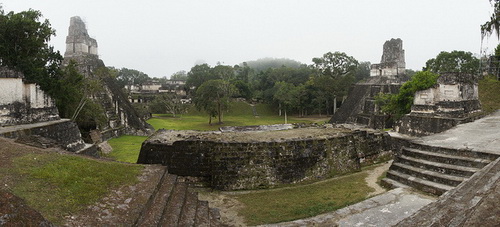Excavation in Tikal
His methodical approach to cataloguing and photographing the Tikal finds proved invaluable as their numbers mounted during more than a decade of investigations, and his own excavations were among the best ever carried out in that testing jungle environment, where tree roots penetrated to amazing depths, tearing the ancient buildings apart. The most impressive excavation was Coe's trench through the Tikal North Acropolis, where a millennium and a half of occupation had left hundreds of plaster floors, limestone walls, bodies of rubble fill and intrusive tomb chambers and ritual offerings both superimposed and interpenetrating.
The Mayan practice of almost demolishing a building before using its remains as the core for a new and usually larger structure posed numerous problems of dating and interpretation: Coe's massive drawn section through the North Acropolis is probably the largest and most complex piece of archaeological recording ever executed in the Mayan area. The North Acropolis proved to have been the dynastic mausoleum of Tikal's rulers for several centuries, and their tombs and the monuments that lined the Great Plaza in front of the acropolis allowed the city's history to be elucidated in a detail hitherto unmatched.
|
|
|
| Opening Hours: |
|
Tikal National Park: daily from 6:00 AM to 5:00 PM |
|
Tikal Museums: daily from 8:00 AM to 6:00 PM |
|
© TikalNationalPark.org - All Rights Reserved! |
